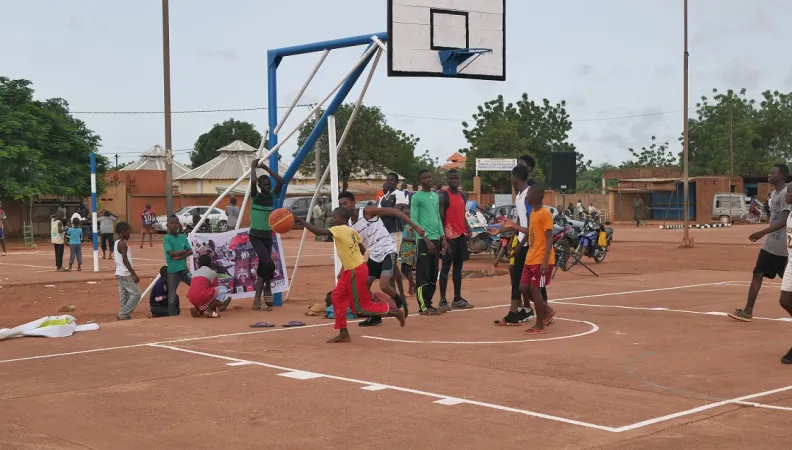Share the page
Reinforcing the Urban Fabric with Citizen Project Laboratories
Published on

In our series on “Shared Innovation”, AFD highlights innovative programs devised and developed in our partner countries.
In Ouagadougou, Abidjan, Dakar and several Tunisian cities, “Citizen Project Laboratories” are flourishing. These initiatives, financed by Agence Française de Développement (AFD), are designed as tools for developing more participatory urban projects. With promising results starting to come in, these pioneering programs are expected to be expanded to other cities. In this article, we take a closer look at this novel system.
Public facilities and infrastructure in cities are sometimes ill-suited to the expectations of users and may wind up degrading rapidly. What can be done to prevent this and the lack of feeling of ownership among users? How can we spark a change in the relationship between the authorities responsible for urban projects and the city’s inhabitants, so that the local economic stakeholders participate more actively in building the city? And how can reconcile urgent needs for public services on the one hand and the long implementation time frame of large-scale urban projects on the other?
Read other reports in our series: “Shared Innovation”
As an initial response to these questions, Citizen Laboratories are hard at work. These AFD-financed projects encourage collective reflection on how the urban fabric can evolve via more participatory, inclusive, and flexible decision-making. These are laboratories for citizen participation in urban projects that round out large-scale projects already financed by AFD in urban development or mobility.
Four projects already underway
Several such initiatives are currently under way in Ouagadougou, Burkina Faso; Abidjan, Côte d’Ivoire; Dakar, Senegal; and a number of cities in Tunisia.
In close collaboration with the Dakar Urban Transport Executive Council, AFD set up the first such urban fabric project in Dakar, the capital and economic hub of Senegal, where the public transport network is undergoing major transformation, involving the Bus Rapid Transit (BRT), the Regional Express Train (TER), and all its feeder lines.
The Dakar Urban Fabric Project was thus created to foster ownership by users and all the city residents—including the poorest—of the future public transport facilities. It promotes public spaces that are co-designed and co-built with the local population, and at the same time it develops participatory approaches covering information, coordination and awareness-raising on the topic.
A tailor-made support system
Based on these pilot experiences, AFD has also created a dedicated financial tool to introduce the urban fabric initiative to new countries. It is accompanied by technical support. “This tool provides a financing window that can put into motion new urban fabric initiatives linked with urban and mobility projects financed by AFD,” says Chloé Pinty, Urban Development and Infrastructure Officer at AFD. “It also provides methodological and technical support for each urban fabric initiative, as well as monitoring and capitalization for this innovative system and similar initiatives.”
A Growing Coalition
The system is backed up by a network coordination program run by a group of NGOs including GRET, UrbaMonde, UrbaSen and Cabanon Vertical.
The French National Research Institute for Sustainable Development (IRD) is also leading a research and evaluation program to support project evaluation and produce knowledge on the notions of participatory urban planning in the countries where AFD operates.
How does it contribute to urban fabric?
The system was launched on October 6, 2020, via two events. The launch day began with the very first Urban Fabric Initiatives steering committee, which acts as a governance space dedicated to the system. It was followed by a conference, open more broadly to partners interested on the topic “How does participatory and transitory urban planning contribute to the urban fabric?”
The conference brought together more than 70 participants, who were asked to contribute to enhance and enrich the urban fabric initiative approach with their experiences and external viewpoints. The urban fabric initiatives and their support system were thus presented before opening up round-table discussions followed by exchanges with the audience. Raphaël Besson, a socio-economist and Director of Villes Innovations, and Rehda Califano, Head of the Social Cohesion Department of Métropole Aix-Marseille metropolis, gave their vision of participatory and transitory urban planning.
A Different Kind of Urban Planning
Hervé Koné, Project Manager of the Ouagadougou Urban Fabric Initiative, was also in attendance. He presented a very positive initial assessment of the experiment carried out in the capital of Burkina Faso:
“What we can already see is that transitory urban planning allows for greater involvement by the local population, especially thanks to these co-design approaches that allow them to determine—collectively and by themselves—their needs and priorities for urban development and facilities.
"When such infrastructure is built together, it leads to better management and improved ownership. There was very strong participation by the people from all social strata of Ouagadougou in the workshops and participatory work camps set up as part of this urban fabric initiative. From the work of common interest that was carried out following these exchanges, we observed that local people were more involved in the care-taking and security of the sites co-designed through these co-design approaches.”
Four major issues identified
Based on their concrete experiences and their exchanges on good practices, the various speakers identified four major recommendations to improve this system:
- Rethink the interrelationships between “traditional” and transitory urbanism.
- Promote the development of new tools for real citizen participation.
- Include collective reflection on ways to develop public policies based on these experiences into the public debate.
- Evaluate the opportunities for and limits to the replicability of transitional and participatory urban planning concepts and experiences, for urban planning that is always rooted in specific realities on the ground.
Chloé Pinty sums up the conference thus: “This sequence of reflection rich in concepts, experiences, and questions was a confirmation of the participants’ commitment to continue collective reflection on the progressive evolution of urban fabric practices. That way, it will be possible to draw lessons from practices in both the South and the North.”
